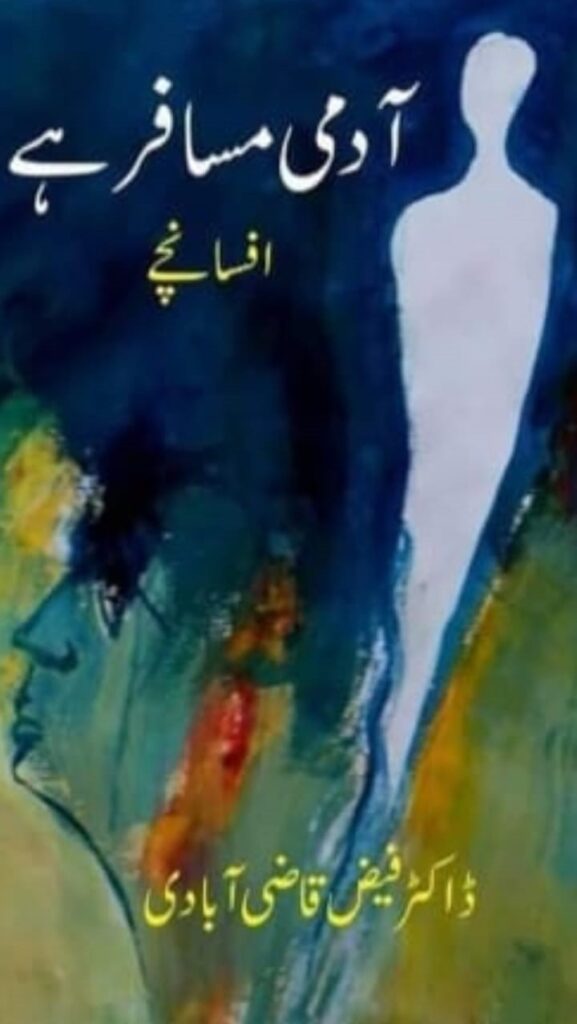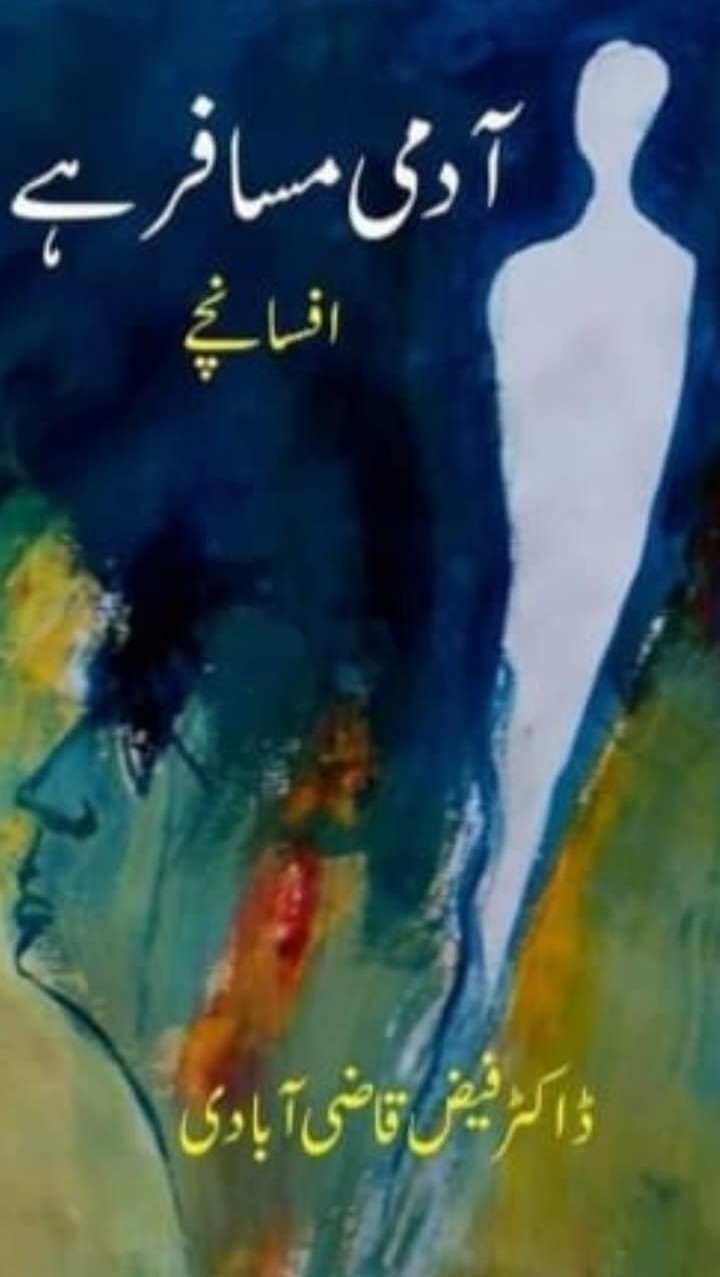By Rayees Ahmad Kumar
North Kashmir’s Baramulla district, celebrated for its enchanting landscape, crystal-clear water bodies, and the Mughal era’s famed Gateway of Kashmir, is equally known for producing some of the finest literary voices of the region. Alongside its scenic grandeur, the district has nurtured a vibrant intellectual tradition, giving rise to writers whose works continue to inspire new generations. Among these literary torchbearers, Dr. Faiz Qaziabadi stands out as both an academician and a distinguished litterateur, with a body of work that reflects the depth of Kashmiri society and the complexities of contemporary life.
Dr. Qaziabadi’s contributions to Urdu literature are manifold. His published works include Tafhimi Iqbal, Lafz Lafz Khushbu, Ahisahar Gahi, Madaris aur Urdu, Prof Bashir Ahmad Nehvi Qadam ba Qadam, and Admi Musafir Hai, while several others remain under compilation. His latest offering, Admi Musafir Hai—a collection of 93 micro-fictions spanning 144 pages—has been brought out by Brar Sons Malerkotla with a thoughtfully designed cover and premium production quality. The book has already begun drawing attention from critics and readers alike, sparking fresh discussions on the power of brevity in literature.
Literary figures have not shied away from praising the collection. Prof. Aslam Jamshedpuri, while penning his comments, observed that Dr. Qaziabadi has mirrored the rhythm of daily Kashmiri life, weaving together local characters with episodes of tragedy, accidental events, and quiet struggles. His review highlights how these micro-fictions, despite their brevity, carry the weight of lived experience. Dr. Salik Jamil has traced the historical roots of Urdu micro-fiction in his analysis of the book, commending Dr. Qaziabadi’s style and examining several stories in detail. Azra Azim, meanwhile, has painted a broader picture of the genre and reflected on Dr. Qaziabadi’s journey from his early schooling to his emergence as a refined storyteller.
According to noted critic Dr. Riyaz Tawhidi, Kashmiri literature of the last three decades cannot be detached from the backdrop of political instability and social turmoil. Writers, including Dr. Qaziabadi, have consistently infused their works with the pain, loss, and endurance of ordinary people caught in conflict. This sense of melancholy, he notes, runs like an undercurrent in many of Qaziabadi’s stories, making them both relatable and haunting.
Dr. Qaziabadi himself admits that his journey into nano-fiction and micro-fiction is the result of 25 years of writing, during which his works found space in leading dailies and literary magazines. The sustained encouragement from readers, he says, pushed him further into experimenting with condensed yet powerful forms of storytelling.
The book opens with Kahani Bani Kahani, which portrays professional jealousy among writers, reflecting how many long for recognition yet remain overshadowed by giants like Saadat Hasan Manto, often considered the father of Urdu short fiction. Other stories echo lived experiences of Kashmiri society: Umeed Ka Khoon depicts the crushing weight of hunger during curfews and strikes, Tadabeer explores the artificial impoverishment created by COVID-19 lockdowns, while Imdad critiques NGOs that hoard donations but offer only meagre help to the poor.
Dr. Qaziabadi does not hesitate to take on sensitive themes. In Du Paap, he exposes the ethical lapses of medical professionals who betray their vocation, while Poutli points to the hypocrisy of writers who chase fame while ignoring the suffering in their own neighborhoods. His story Maan (Mother), which portrays the abandonment of elderly parents by sons settled abroad, is deeply moving, often bringing tears to readers’ eyes. Similarly, Mushairah critiques the growing commercialization of poetry, where only paid symposiums attract attention, and Khushksali takes aim at corruption in academia.
Some stories, such as Robert, highlight shifts in cultural practices, in this case the mechanization and outsourcing of funeral rites. Others, like Darindon ki Basti, present allegories on the erosion of human values, blurring the line between man and beast. In Mobile Number, the author points to a modern malaise—sons who keep in touch with distant acquaintances but neglect their own parents. Andar ki Baat reflects on the paradox of Urdu litterateurs delivering fiery speeches on preserving the language while steering their own children away from pursuing careers in it.

Stories such as Sapoot and Itihad add moral complexity to the collection. While Sapoot depicts sons who still honor their parents despite hardships, Itihad exposes the hypocrisy of leaders who fracture associations only to preach unity later. Through these sketches, Dr. Qaziabadi emerges as a writer of conscience, holding a mirror to society without flinching from uncomfortable truths.
Critics argue that the strength of Admi Musafir Hai lies not only in its narrative skill but also in its rootedness. Each story, however brief, feels lived and authentic, capturing an entire world in a handful of sentences. The collection demonstrates that micro-fiction, often dismissed as a minor form, can convey profound truths about society, culture, and morality.
With each new work, Dr. Faiz Qaziabadi’s reputation as a powerful voice in Kashmiri and Urdu literature grows stronger. His pen does not merely tell stories; it documents an era, exposes hypocrisies, and preserves the essence of human endurance in times of trial. For readers and critics alike, Admi Musafir Hai is more than a book—it is an invitation to witness life in Kashmir through the sharp lens of micro-fiction.
For anyone who values Urdu literature, this collection is a must-read. It is a reminder that even in a few words, a writer can carve out entire worlds, leaving readers to carry the echoes long after the page is turned.
The views expressed in this article are solely those of the author and do not necessarily reflect the opinions or views of this newspaper
